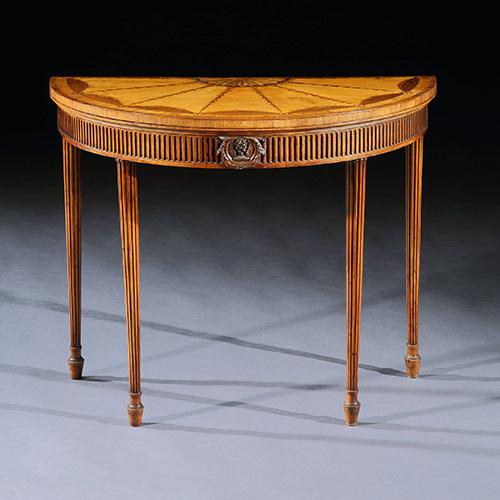

From relatively humble origins, Thomas Chippendale became the most famous British furniture-maker of the 18th century. Patronised by royalty, gentry and countless public figures, his designs graced many of the finest houses both in Europe and America.
Born in the village of Otley, West Yorkshire in 1718, Thomas Chippendale was the only child of John and Mary Chippendale. The Chippendale Family had been carpenters in the timber trade for generations and John, a joiner, is thought to have trained young Thomas in the trade.
Much of Thomas’ early life remains a mystery but for the fact that he was educated at Prince’s Henry’s Grammar School in Otley. It is also believed that he worked for a time as an apprentice to Richard Wood, a cabinet maker based in York.
The Georgian era was a time of great opportunity for an ambitious young man and Chippendale’s exceptional craftsmanship, combined with a talent for drawing and design, gave him a competitive edge over many of his peers.
It is not known for certain when Thomas decided to seek his fortune in London, but we do know that he married Catherine Redshaw at St George’s Chapel, Mayfair in 1748. He rented a small house in Conduit Court, Covent Garden shortly after where the couple welcomed the first of nine children, five sons and four daughters.
Initially Thomas worked in the Rococo style, which became popular in Europe throughout the 1730s and was then known as the Modern Taste. His work seamlessly combined practical functionality with beautiful designs creating exceptional pieces of furniture in a variety of media from carved mahogany and gilded wood to exotic japanned Chinoiserie.
After relocating his home and workshop to 60-62 St Martin’s Lane in 1754, Chippendale began a partnership with James Rannie, a wealthy Scottish merchant. This new venture would propel the family business to international acclaim.
That same year, Thomas published his first trade catalogue “The Gentleman and Cabinet Maker’s Director”. While furniture designs had been printed before, no one had ever attempted a publication on such a grand scale with the first print containing 160 plates.
The catalogue contains Chippendale’s personal illustrations for almost every conceivable style of mid-18th century furniture, thereby enabling the reader to browse the pages and simply order a piece of furniture straight from the page.
The Director was an instant success, and was reprinted again in 1755, while many lucrative commissions flooded in. Chippendale acted like a modern interior designer and worked with other leading specialist in textiles and metalwork, enabling him to supply bespoke fully furnished and decorated rooms or entire houses.
Within a year of first publishing the Director, the business had grown to such an extent that Thomas was employing 50 cabinet makers, upholsters and carvers at his workshop. He also produced an enlarged revision of the Director in 1762 to cater for the changing fashion in home furnishings.
Chippendale was heavily influenced by the work of his contemporary Robert Adam, with whom he is known to have collaborated on a number of significant projects. Indeed the 1762 edition of the Director shows an emergence towards Adam’s Neoclassical designs or the “Adams Style” as it as popularly known.
Fine examples of Thomas’s work can be seen in the collections at Harewood House (his most expensive commission) and Nostell Priory, in Chippendale’s native Yorkshire, and Dumfries House in Scotland. There are also a pair of armchairs and a pair of gilded beechwood sofas in the Royal Collection, currently situated in the Morning Room at Clarence House.
In 1772, Thomas’s wife Catherine died which may have played a part in his decision to retire and hand over the day to day running of the business to his Thomas Jnr in 1776. The following year Thomas Snr married Elizabeth Davis and fathered three more children before his death from tuberculosis in 1779.
Fittingly Chippendale was buried at St Martin-in-the Fields church, a short walk from the site of his legendary workshop. He is also celebrated in stone with sculpture adorning the Victoria & Albert Museum, London on the Exhibition Road.
The statue is fitting tribute to a craftsman so influential in the development of British furniture that the term Chippendale is still widely used as a description for any item of 18th century furniture that resembles his designs.
Despite the company’s phenomenal success, cashflow was a constant issue as few of the firm’s clients paid in a timely fashion. This would prove their eventual downfall, with Thomas Chippendale Jnr forced to declare bankruptcy in 1804.
Ironically, due to their wonderful designs and remarkable craftsmanship Chippendale pieces remain much loved and highly sought after over 200 years later, with good examples selling for close to £4 million at auction.
Click here to view a selection of Chippendale style furniture currently available from BADA members.

